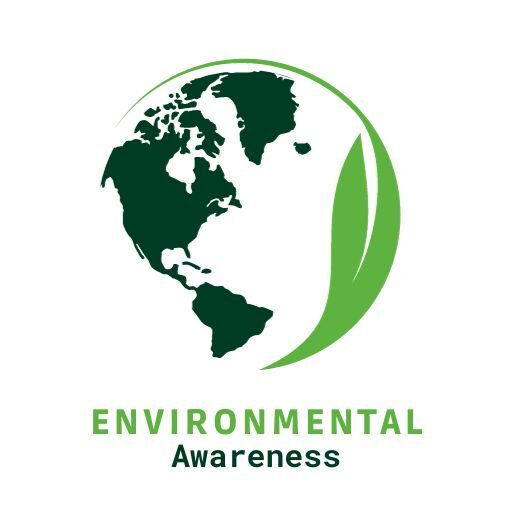
Environmental Literacy for All: Promoting Inclusive Education and Awareness
Promoting environmental literacy is more important than ever in a world where environmental issues are growing more urgent. Understanding the environment’s workings, the interdependence of ecological systems, and the effects of human activity on the ecosystem are all components of environmental literacy. It gives people the ability to decide for themselves and act responsibly to preserve the environment.
Spreading knowledge alone won’t be enough to achieve broad environmental literacy, though; inclusive education and awareness campaigns that serve a variety of populations are also necessary. In this blog, we’ll explore the importance of environmental literacy for all and delve into strategies for promoting inclusive education and awareness.
Understanding Environmental Literacy
It’s important to comprehend what environmental literacy promotion involves before getting into its intricacies. A person’s ability to actively interact with environmental concerns is facilitated by a variety of information, skills, attitudes, and behaviors that make up environmental literacy. This entails having a thorough awareness of ideas like pollution, climate change, biodiversity, and sustainable development in addition to having the analytical skills necessary to evaluate environmental data critically and come to wise judgments.
Fundamentally, environmental literacy is about developing a strong bond with nature and a sense of environmental responsibility. It enables people to take on the role of stewards of the earth by supporting laws and procedures that advance sustainability and the preservation of biodiversity.
The Importance of Environmental Literacy
- Understanding Complex Environmental concerns: Those who possess environmental literacy are more equipped to make informed judgments and take decisive action to solve major environmental concerns including pollution, biodiversity loss, and climate change.
- Encouraging Sustainable Behaviors: By raising knowledge of the connection between human activity and environmental deterioration, environmental literacy encourages people to take up sustainable habits including cutting back on trash, saving energy, and endorsing eco-friendly projects.
- Empowering Environmental Stewardship: Environmental literacy enables people to become proactive stewards of the planet, pushing for laws and practices that support sustainability and biodiversity conservation. It does this by fostering a strong connection with nature and instilling a sense of responsibility for the environment.
- Encouraging Informed Decision-Making: Environmental literacy gives people the information and analytical abilities they need to assess environmental data critically and decide on environmental issues, from public policy advocacy to personal lifestyle decisions.
- Addressing Environmental Injustices: By drawing attention to the disproportionate effects that environmental degradation has on marginalized communities, environmental literacy enables people to identify and confront environmental injustices as well as promote social justice and environmental equality.
- Encouraging Resilience and Adaptation: Environmental literacy encourages resilience in the face of climate change and other environmental issues by assisting people in comprehending the effects of environmental change, creating risk-reduction plans, and creating sustainable communities.
- Promoting Civic Engagement: By enabling people to actively participate in environmental decision-making processes, environmental literacy promotes civic engagement and gives them the ability to stand up for environmental laws and practices that are consistent with their goals and values.
- Fostering International Collaboration: In a world growing more interconnected by the day, environmental literacy fosters mutual understanding and cooperation across national boundaries, enabling international cooperation to tackle common environmental issues and realize sustainable development objectives.
Promoting Environmental Literacy Through Inclusive Education
The cornerstone of increasing environmental literacy for everyone is inclusive education, as we will discover when we examine the significance of inclusive education for this purpose. It acknowledges that students have a variety of needs, experiences, and viewpoints and works to establish inclusive, accessible learning environments for all. Reaching marginalized populations in the context of environmental education, such as low-income households, ethnic minorities, indigenous peoples, and individuals with disabilities, requires inclusivity.
Cultural relevance is one of inclusive education’s guiding concepts. Different cultural perspectives on nature and the environment should be acknowledged and incorporated into environmental education programs, taking into account the possibility that different groups have particular relationships with the natural world. By incorporating cultural relevance into educational materials and activities, educators can make environmental literacy more accessible and engaging for learners from diverse backgrounds.
In addition, inclusive education entails removing obstacles to involvement such as linguistic difficulties, financial limitations, and physical impairments. This could be making educational materials available in a variety of languages, providing funding to participants in educational initiatives, or making sure that learning facilities are physically accessible to individuals with disabilities.
Promoting Environmental Literacy Through Community Engagement
Another essential component of encouraging environmental literacy for all is community engagement. Engaging communities in environmental education and awareness campaigns allows educators to draw on local knowledge and experience, which gives participants a more relevant and meaningful learning experience.
Participatory learning and action opportunities are offered by community-based environmental programs like habitat restoration, clean-up campaigns, and community gardens. These initiatives build a sense of ownership and responsibility for regional ecosystems in addition to improving participants’ awareness of environmental challenges.
Additionally, social cohesiveness and resilience are strengthened through community engagement, enhancing communities’ capacity to respond to environmental crises as a group. Initiatives for environmental education have the power to spark beneficial social and environmental change at the local level by encouraging cooperation and teamwork among community members.
Harnessing Technology for Environmental Education
In the current digital era, technology provides an effective means of disseminating environmental literacy to a wide range of audiences. The utilization of online platforms, mobile applications, and interactive multimedia materials can augment the accessibility and efficacy of environmental education endeavors, especially for those who might encounter obstacles with conventional modes of instruction.
For instance, augmented reality (AR) and virtual reality (VR) technologies let people engage in dynamic and captivating interactions with intricate ecological ideas while fully submerging themselves in virtual settings. These technologies offer other modalities of learning that accommodate a variety of learning preferences and styles, which can be especially helpful for visual learners and those with disabilities.
In addition, social media sites and online forums offer channels for information exchange, conversation starters, and mobilizers of environmental action. Teachers can promote collective action for environmental conservation and sustainability and reach a wider audience by utilizing social media.
Conclusion
Being environmentally literate is not a luxury in a world where environmental concerns have never been greater. Through advocating for inclusive education and consciousness, we may enable people from many backgrounds to become knowledgeable and involved guardians of the environment.
Recognizing the diversity of learners, inclusive education aims to provide equitable, accessible learning environments that meet the needs of all students. We may increase the inclusivity and impact of environmental education by eliminating participation barriers, promoting community engagement, and incorporating cultural relevance.
With the use of technology, environmental education may be improved and shared with a wide range of people. We can increase the reach and efficacy of environmental literacy programs by utilizing social media, virtual reality, and digital platforms. This will guarantee that everyone has the information and abilities necessary to contribute to a more sustainable future.
Inclusive education is vital, not simply desirable, in the quest for environmental sustainability. We can develop a generation of knowledgeable, capable citizens who are prepared to take on the environmental challenges of the twenty-first century by advocating for environmental literacy for all.





